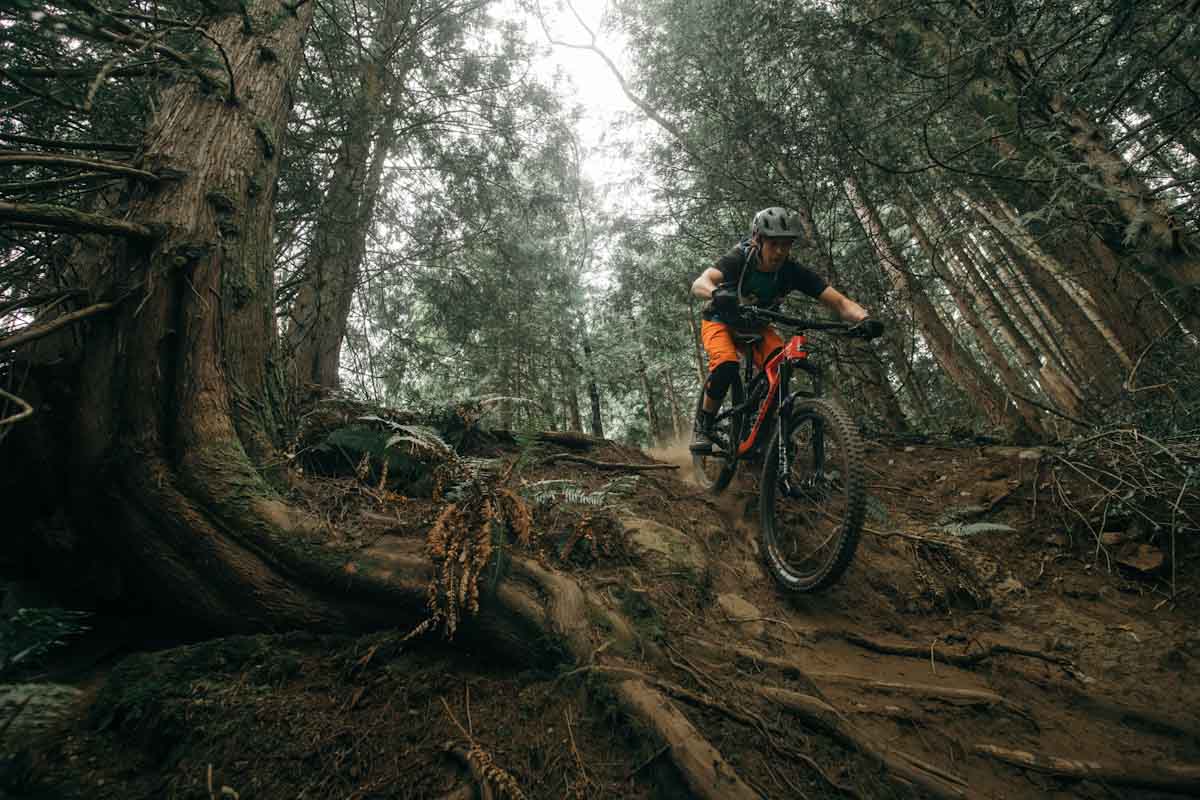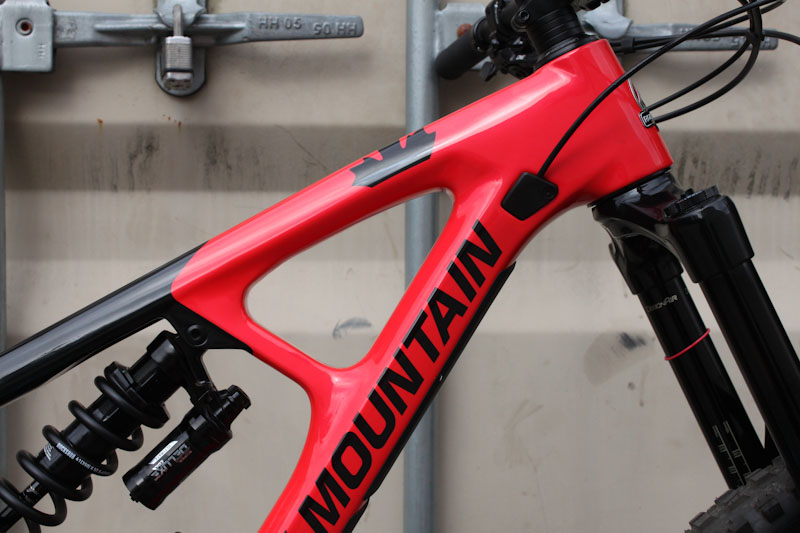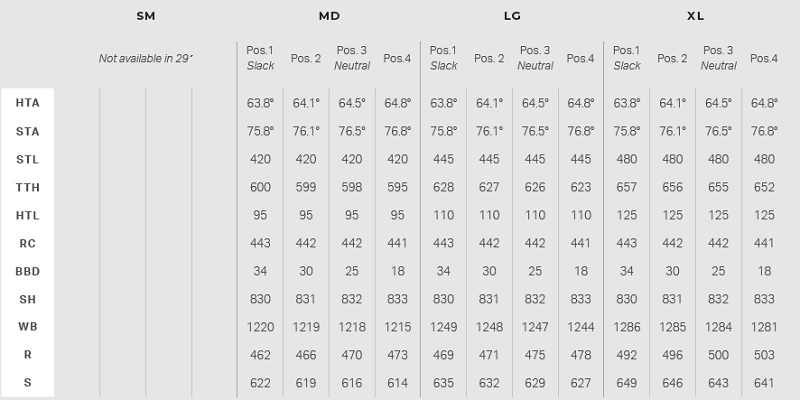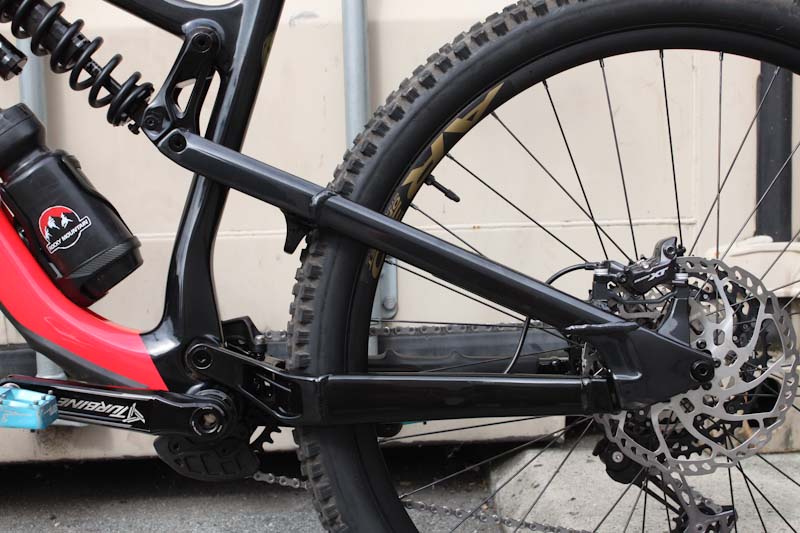Some bikes are definitely a product of their environment. The redesigned 2020 Rocky Mountain Slayer couldn’t feel any more at home than it does on Vancouver’s extremely technical, rowdy North Shore trails. With 170mm of travel and 29” wheels (or 180mm and 27.5”) this bike was built for taming challenging terrain with a new level of confidence.
I had two days to ride the Slayer Carbon 70 29, and Rocky Mountain didn’t hesitate to take us down the North Shore’s most puckering trails to showcase this monster truck of a bike. When your guides and shuttle drivers include Wade Simmons, Andreas Hestler, Thomas Vanderham and a few other absolute shredders from RMB’s roster, you know you’re in for a high-level ride!
Intended use: Slaying the Gnar!
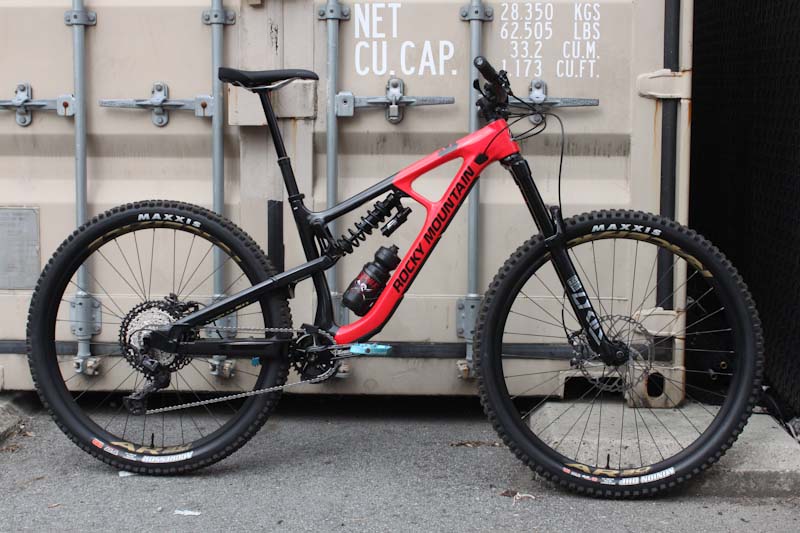 As the name suggests, this bike was built for thrashing down the most technical, rough, enduro-to-DH style terrain you can find. And just how does it do that? Well, it starts with 170mm’s of travel at both ends and 29” wheels, which simply laughed their way over North Vancouver’s rocks, roots and bomb-holed loam trails. RMB also stocks coil shocks on the new Slayers, which I’d definitely agree is ideal for this bike.
As the name suggests, this bike was built for thrashing down the most technical, rough, enduro-to-DH style terrain you can find. And just how does it do that? Well, it starts with 170mm’s of travel at both ends and 29” wheels, which simply laughed their way over North Vancouver’s rocks, roots and bomb-holed loam trails. RMB also stocks coil shocks on the new Slayers, which I’d definitely agree is ideal for this bike.
The next step is a very slack head tube angle. RMB’s RIDE-4 chip is included on this bike, but it only varies the steering angle from 63.8 degrees to 64.8 degrees, so your range of adjustment goes from ‘slack’ to ‘slacker’. Step three is to ensure stability at high speeds. For 2020, The Slayer’s front end has stretched out to offer between 462-473mm’s of reach, and its rear end is not short at 441-443mm.
The final priority was making the bike strong. RMB wanted to make sure this super-tough trail bike could handle bike park days, enduro races and lots of gnarly rough trails. Weight was not a high priority, so the Slayer frame received a new brace in front of the shock mount and thicker walled tubing throughout the carbon front triangle and aluminum rear end.
On the other hand this is an enduro bike, so enduro racers or recreational buyers will be pedaling it uphill. Offsetting the Slayer’s slack head tube and long wheelbase is a steep seat tube angle (75.8-76.8 degrees), which helps the bike maintain its more than acceptable climbing prowess.
Keep in mind all the specs and figures provided in this article refer to the size medium Slayer Carbon 70 29er I rode, but check out my model overview article for specs on the other niners and 27.5” versions.
Geo/Fit:
I rode the Slayer in the Ride 4 chip’s neutral position (Pos. 3), which is the position the frame’s geometry was designed around. This gave my test bike a head tube angle of 64.5 degrees, seat tube angle of 76.5 degrees and a 25mm BB drop.
It probably goes without saying that the Slayer’s slack steering angle pays off on the steeps, and like most current enduro bikes, its steep seat angle maintains good pedaling ability. In Position 3, the BB was low enough to give the bike stable handling, but without causing me to clip my pedals all over the trail.
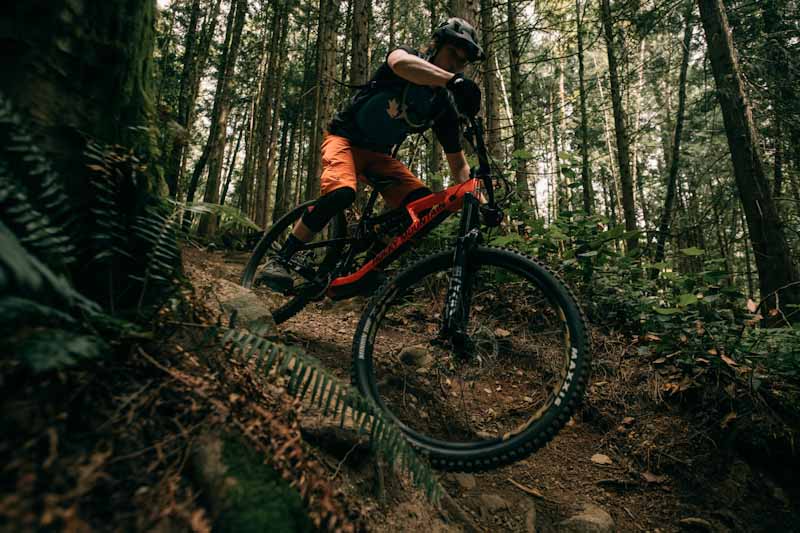
Sizing wise, the Slayer’s medium frame felt comfortable to me even though it’s on the longer side with a 470mm reach. Due to the longer 442mm rear end the Slayer is not a wheelie machine, but it’s still reasonably nimble in the corners and definitely provides a stable feeling ride when speeds pick up.
Frame and suspension:
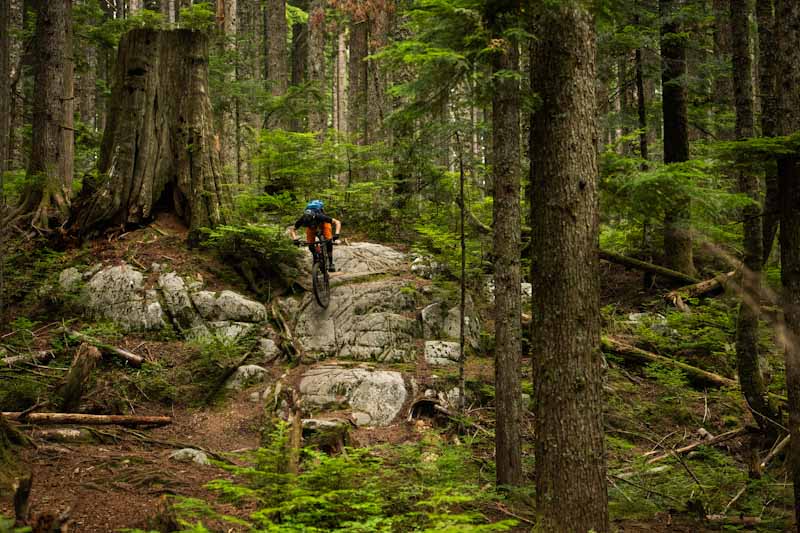
Without any massively oversized tubing, Rocky Mountain succeeded in making the new Slayer’s carbon front triangle very stiff. The large head tube junction, extra front triangle brace and thicker walled carbon makes it easy to keep this bike plowing straight through rooty or rocky terrain. Out back, the Slayer’s aluminum rear end is stiff enough to charge through anything, but it’s not bone-jarring. When you’re thrashing through rough stuff, the rear end gives just enough that it doesn’t force your body to soften every hit by itself.
The Slayer Carbon 70 29er’s RockShox Super Deluxe Coil Ultimate RCT rear shock definitely suits the bike’s character. It’s highly sensitive ride helps the Slayer’s rear wheel do a great job of hugging even the roughest, bounciest terrain. Rocky puts size-appropriate springs on each bike too, so my medium had a 400lbs. spring. At 145lbs plus gear, that seemed to be perfect for me. I did bottom the bike out, but only on hard hits or off a good sized drop.
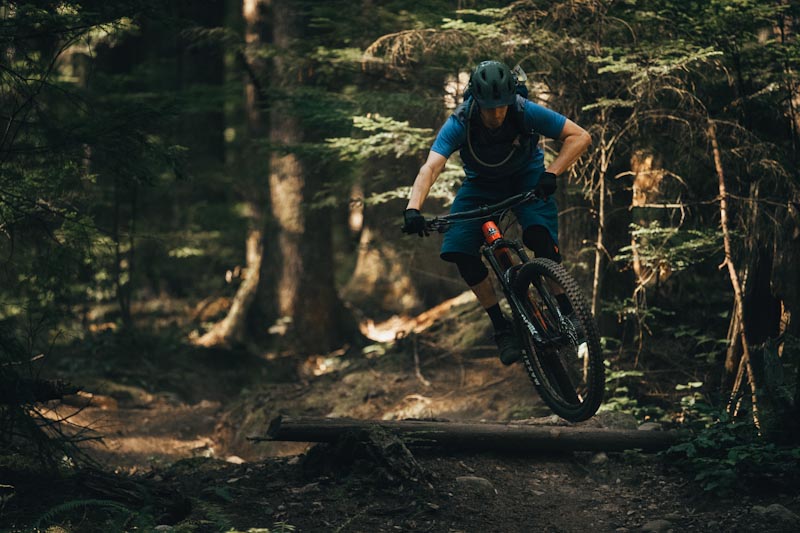
I’ve ridden a few Rocky Mountain bikes recently (namely the Pipeline and the Instinct BC Edition), and the Slayer maintains RMB’s favoured ride characteristics. Even with tons of travel, a lengthy rear end and a coil shock, the Slayer’s four-bar Smoothlink suspension still allows the bike to pop off bumps and lips with ease. I will say the Slayer’s rear end feels more supple than the other two bikes, which suits its trail-devouring intentions nicely.

With just a glance at the Slayer’s angles and travel numbers, it’s clear this bike favors downhill thrashability over ultra-efficient climbing, but it’s not a bike you’ll regret riding every time the trail turns uphill. RMB was wise to put two-position shocks on most models of the Slayer (all except the base Alloy 30 model), and the firm mode on RockShox’s Super Deluxe Coil Ultimate RCT greatly stiffened up the rear end. I flipped the switch when we climbed some fire road sections, and it definitely takes away most of the pedal bob.
Even with the shock open, the Slayer does pretty well going up. RMB’s linkage is fairly supportive at mid-stroke, so the Slayer doesn’t wallow deep into its generous travel from pedalling forces alone. While it descends like a DH rig, I was happy to find it still climbs like a trail bike.
Components:
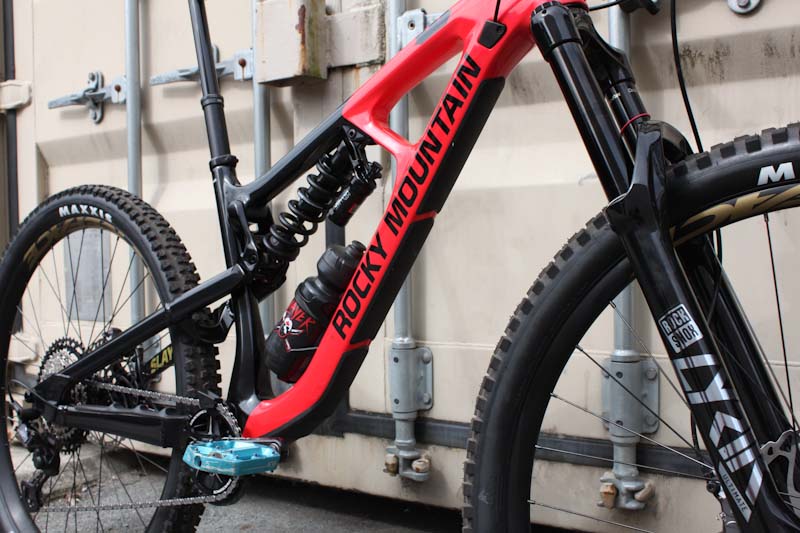 The Slayer Carbon 70 29’s RockShox Lyric Ultimate RC2 fork setup was painfully easy- I set the air to the recommended pressure, put the rebound about ¾ to the fast side, and the fork was dialed. As a lighter guy, I was pleased to find I hit full travel on every trail we rode (they were ALL rough enough!).
The Slayer Carbon 70 29’s RockShox Lyric Ultimate RC2 fork setup was painfully easy- I set the air to the recommended pressure, put the rebound about ¾ to the fast side, and the fork was dialed. As a lighter guy, I was pleased to find I hit full travel on every trail we rode (they were ALL rough enough!).
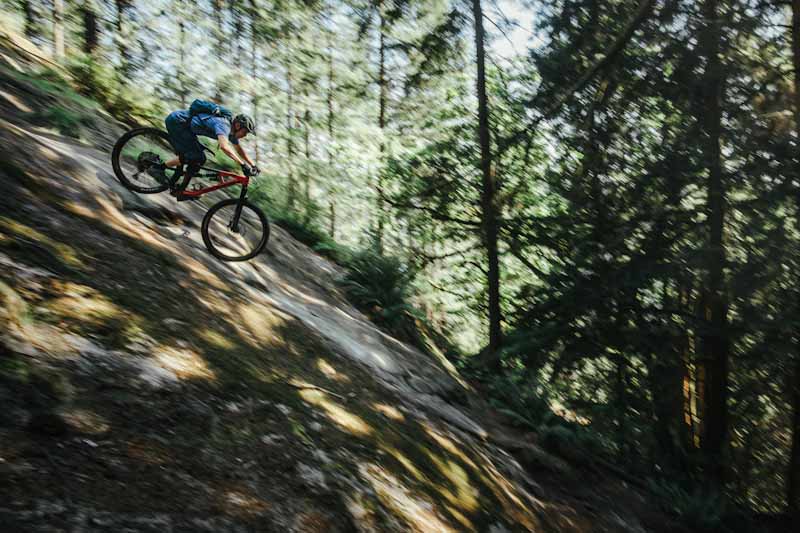
Shimano’s XT Trail four-piston brakes grabbing a pair of 203mm rotors offered up tons of power. Even after riding mostly SRAM brakes for the last while, I didn’t have any trouble with modulation when just a light touch was required.
Shifting with the XT shifters and derailleur was crisp and reliable, but I greatly prefer the shape and finish on SRAM’s shifters versus Shimano’s. The paddles look a bit cheap, and the release paddle is further under the bar and requires more throw than SRAM’s (which is practically like pushing a button).
The Slayer’s wheels felt reasonably light, and my rear Race Face AR30 rim took one nasty hit on a square-edged rock without denting. Those rims are wrapped with top-notch Maxxis Minion DHF Maxx Grip 3C front and Aggressor rear tires (both 2.5” wide with double-down casings).
My medium-framed test bike had a 180mm One-Up dropper post installed. I was impressed enough with that, but it can actually run up to a 200mm post. That should keep your saddle low enough when things get steep!
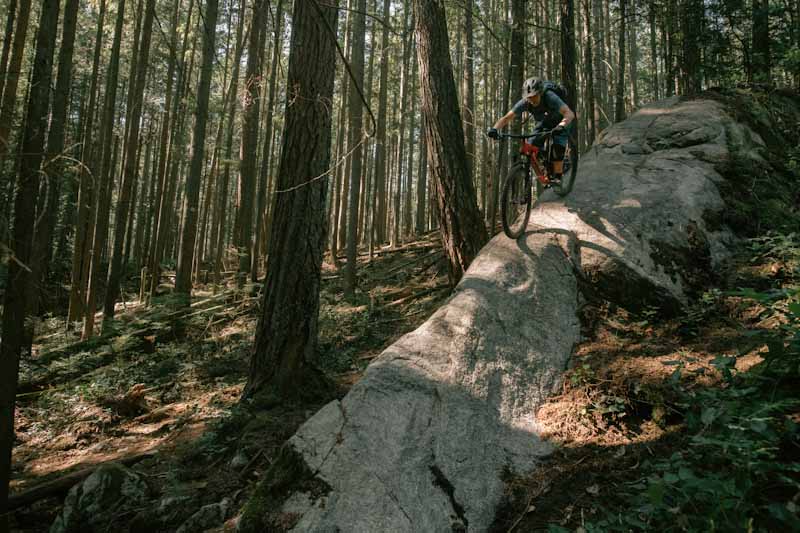
If you race enduro, live in an area with highly technical trails, or want one do-it-all bike that can handle a fair bit of bike park shredding, the Slayer Carbon 70 29 is a bike you’ll have a lot of fun with. Its sheer thrashability is very DH-like, but it still pedals better than you might think. After riding Vancouver’s notorious North Shore trails, I can assure you this big bike makes short work of the nastiest, gnarliest terrain out there.
